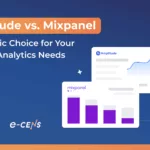Google Tag Manager (GTM) and gtag.js are two common methods for implementing tracking codes like Google Analytics on a website.
While they serve similar purposes, these two tools have some key differences. In this guide, we’ll compare GTM vs gtag to help you determine which implementation method is right for your needs.
What is Global Site Tag (gtag.js)?
gtag.js is a JavaScript tracking code developed by Google to allow simplified implementation of multiple Google tracking tools using a single snippet of code. Some key things to know about gtag.js:
- Tracking code used by Google products like Google Analytics, Google Ads, Google Marketing Platform, etc.
- Allows loading tracking codes for multiple Google tools with one snippet
While gtag.js can interact with the dataLayer, it is primarily a JavaScript library for deploying Google’s analytics and advertising services on a website
Here’s an example of what the gtag.js code looks like:

This code snippet loads and initializes the gtag library. The gtag(‘config’) line sends the default pageview hit to Google Analytics. Additional commands can be inserted to send data to other Google tools, such as Google Ads, Floodlight, or Google Marketing Platform.
What is Google Tag Manager?
Google Tag Manager (GTM) is a tag management system that provides a user interface to manage the implementation of tracking codes and marketing tags on a website. With GTM, you can:
- Centralize implementation of all tracking codes and tags through a single GTM container installed on-site
- Easily add or remove tags without editing the site code
- Built-in templates can be used for many marketing tools like Google Analytics, Facebook Pixel, etc.
- Create customized triggers and events to deploy tags
- Conduct QA before publishing tag changes live
- Rollback changes or manage tag versions
In summary, GTM removes the need to manually add tracking scripts to your site code whenever you want to add or modify tracking. Instead, you simply manage tags through the user-friendly GTM interface.
Also, check out our blog on Google Tag Manager vs Google Analytics – What are the Differences?
6 Differences Between Google Tag Manager and gtag.js
Now that we’ve covered the basics let’s discuss some of the key differences between GTM and gtag.js:
1 – GTM Centralizes All Tag Management
With GTM, all tags are configured and deployed from a single account. GTM provides a “command center” to manage tags across channels. gtag.js requires adding code directly to each site or app. There is no central management console. Configuration is decentralized.
2 – GTM Supports Hundreds of Vendors
A major benefit of GTM is its expansive tag library, which contains hundreds of integrations for marketing, analytics, and other tags. This includes all Google products as well as popular third parties. gtag.js only supports a handful of Google tags, such as Google Analytics, Google Ads, and Google Marketing Platform.
3 – GTM Does Not Require Code Changes
Once the GTM container is installed, tags can be added, modified, and removed through the GTM UI without touching the code. gtag.js requires editing code whenever you want to make a change, like enabling a new Google product or updating tracking IDs.
4 – GTM Offers Robust Version Control
GTM has built-in version control with environments, change preview, and rollback capabilities for managing tag changes. With gtag.js, testing and rolling back changes require manually editing code. No centralized version control features exist.
5 – GTM Enables Collaboration
GTM allows both marketers and developers to manage tags according to their roles. Marketers can self-manage tags without waiting on developers. gtag.js requires developer resources to make any changes. Collaboration is often more siloed.
6 – GTM Delivers Cross-Channel Support
In addition to websites, GTM can be used to manage tags in mobile apps, email, kiosks, smart devices, and more. gtag.js is predominantly used for websites. Expanding it to other channels involves more custom development work.
Also check out our blog on Universal Analytics vs GA 4
When Should You Use Google Tag Manager vs gtag.js?
Now that you understand the key distinctions, when should you actually use GTM versus gtag.js? Here are some general guidelines:
Use Google Tag Manager If:
- You need to manage many tags from different vendors
- You want non-technical users to manage tags without coding
- You value robust version control and rollback functionality
- You need to deploy tags across channels like mobile apps
- You require collaboration between marketing and development teams
- You anticipate frequent tag changes and want flexibility
Use gtag.js If:
- You only need basic Google Analytics, Google Ads, and other Google tags
- Your developers manage all tag changes directly in the code
- You have an existing site using gtag.js, and migrating would be difficult
- You need to comply with strict IT policies that prohibit tag managers
- You have limited development resources and need a lightweight option
Google Tag Manager is recommended for most organizations because it provides superior flexibility, control, and enterprise readiness. But there are certain situations where sticking with gtag.js may make sense, like small sites with static tagging requirements.
When to Use gtag.js
Given GTM’s advantages, you may wonder if there’s any situation where gtag.js may be preferable. There are some scenarios where using the standard gtag snippet can make sense:
- Strict developers not allowing tag managers
Some development teams do not allow the usage of tag management systems like GTM due to perceived security or performance risks. In such cases, gtag.js allows the lightweight implementation of Google Analytics and other basic Google tags. Something is better than nothing.
- Existing sites already using gtag.js heavily
For sites that already have gtag.js implemented with many custom commands, switching to GTM may require significant QA. Rewriting existing custom gtag logic into GTM can also be complex. In such cases, it may be better to continue using gtag to avoid disruptions.
Conclusion and Recommendation
In most cases, Google Tag Manager is recommended over using gtag alone. The only exceptions are if you have a strict security policy prohibiting tag managers or an existing site relying heavily on hardcoded gtag implementation.
GTM provides a robust analytics platform that evolves along with Google’s products. It offers unparalleled flexibility, customization, and support for Google and third-party tools.
For new implementations, GTM should be the default choice. Over time, even gtag sites can benefit from migrating to GTM as feasible to gain access to the broader feature set. If you’re new to GTM, focus on starting with the basics:
- Install the GTM container
- Configure Google Analytics via the tag template
- Trigger GA on all pageviews
- Use built-in variables for basic data like page URL
- Publish and test live
From there, you can expand your implementation over time as needed. The official GTM documentation provides a great tutorial on getting started. With its user-friendly and customizable approach to tag management, Google Tag Manager will benefit most websites rather than relying solely on the more limited gtag script.
FAQ
What is the difference between the Global Site Tag and Google Tag Manager?
The Global Site Tag (gtag.js) is a Google-provided tracking code that supports Google products like Analytics and Ads. Google Tag Manager is a tag management system that can deploy the Global Site Tag and tags from any other vendor.
Should I use gtag or GTM for Google Analytics?
Google recommends using Google Tag Manager for the best flexibility. GTM allows you to configure Google Analytics alongside other tools easily, but gtag limits you to Google products.
Is gtag going away?
No, gtag is still fully supported by Google and can be used independently for Google-only tracking. However, given its advantages, Google is increasingly recommending Google Tag Manager even for Google tools.
Can I use gtag and GTM together?
It is not recommended to install gtag directly on pages already implementing Google Tag Manager. If tagging is not set up carefully, the tools may conflict with each other. We prefer configuring Google Analytics exclusively through GTM.
Does gtag support third-party tools?
Well, not really, no. gtag.js is optimized for Google services.
Integration with third-party tools is possible but requires custom coding, unlike GTM’s built-in support for a wide range of third-party tags.
Is gtag secure to use?
Yes, gtag is a first-party Google code and is secure to use, just like any other Google tracking script. The security limitations mainly apply to third-party tag managers rather than first-party scripts like gtag.





